
How to Transcribe a Focus Group Discussion
98% accurate, real-time transcription in just a few clicks. 58 languages and multiple platforms supported.
Focus group discussions are when a group of people talk about a specific topic. It's a useful way to learn what your customers think about something. These discussions can involve a small group of 5 people or a larger one with 15 people.
Transcribing the things people say during these discussions can help your team understand the information better. However, it can be tough because these recordings are different from regular interviews or audio files. They often have background noise, quiet conversations, and body language, which makes writing them down more challenging. In this article, we will describe how to transcribe a focus group discussion.
How to transcribe a focus group discussion
Transcribing focus group discussions is important because it helps the researcher record the natural and unplanned conversations that happen during the discussion. Also, if you want to record meetings then you can use Notta to get real-time transcription of focus groups.
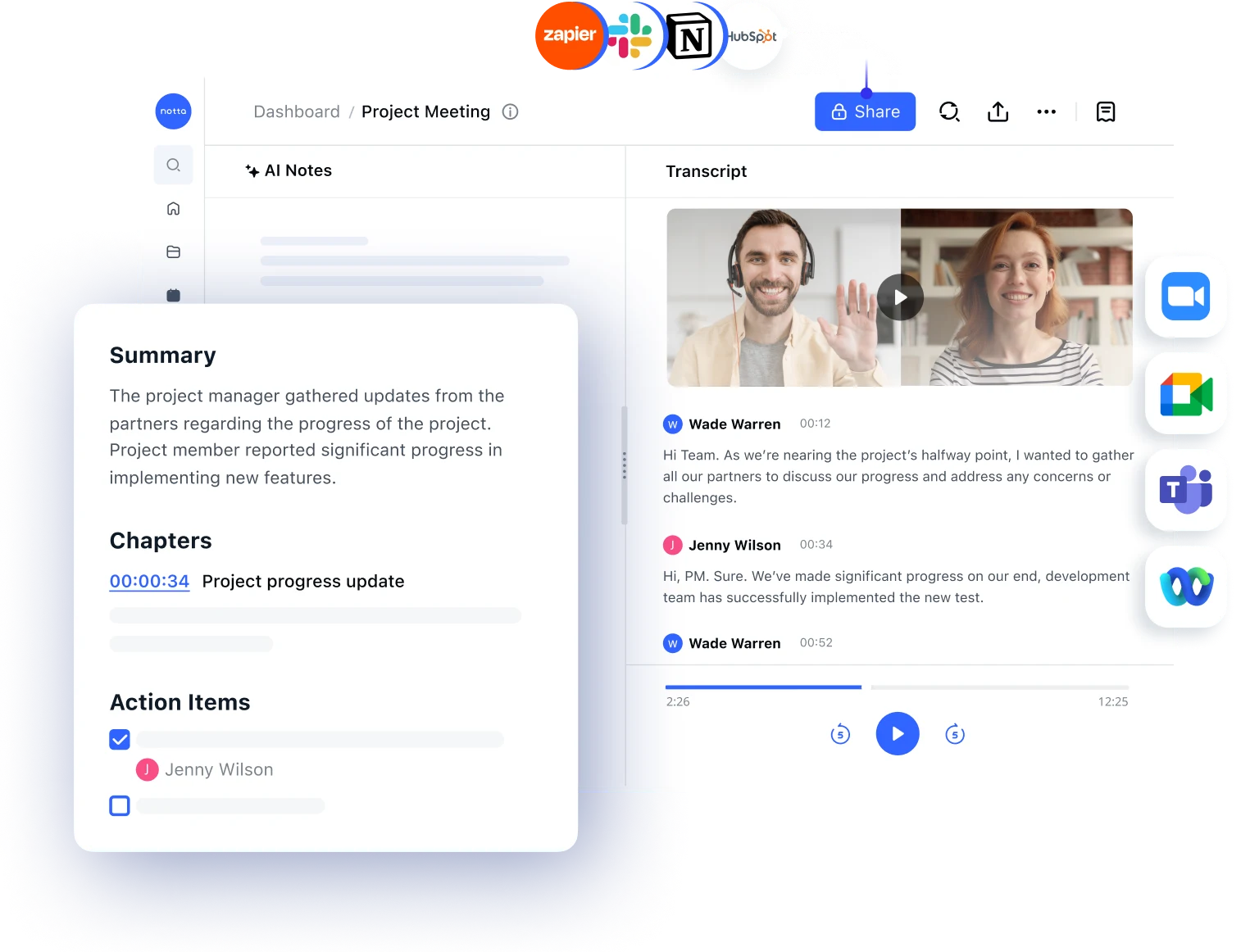
Key features:
Supports various meeting platforms such as Google Meet, Google Meet, Microsoft Teams, Zoom, Webex integrated, etc.
Speaker recognition: Make sure the system can tell who is speaking during the conversation.
Confidential protection: Keep participants' information safe and private.
Fast transcription: On average it takes 5 minutes to transcribe 1 hour of audio content; Make the system transcribe quickly, so it doesn't take too long to turn audio into text.
AI summary: Use AI to create a summary of what was discussed, picking out the most important parts.
Here are the steps to record a group discussion and transcribe the recording to text -
Step 1: Record the focus group discussion
The first job is to record everything that people say in a focus group discussion. To do that, you need to select a suitable location, choose recording equipment, test the audio, etc.
Step 2: Transcribe the conversation verbatim
The next thing to do is transcribe the conversation verbatim. To do this, you can use Notta. Notta provides you with 98% accurate transcription by using AI. This tool doesn’t take too long to turn your audio into text. Also, it ensures the participants' information is safe and private. Here are the steps to transcribe the conversion verbatim with Notta:
Make a free account and sign in to the Notta dashboard. Upload the recording into Notta or use it to record the conversation live. Select the right transcription language for the conversation.
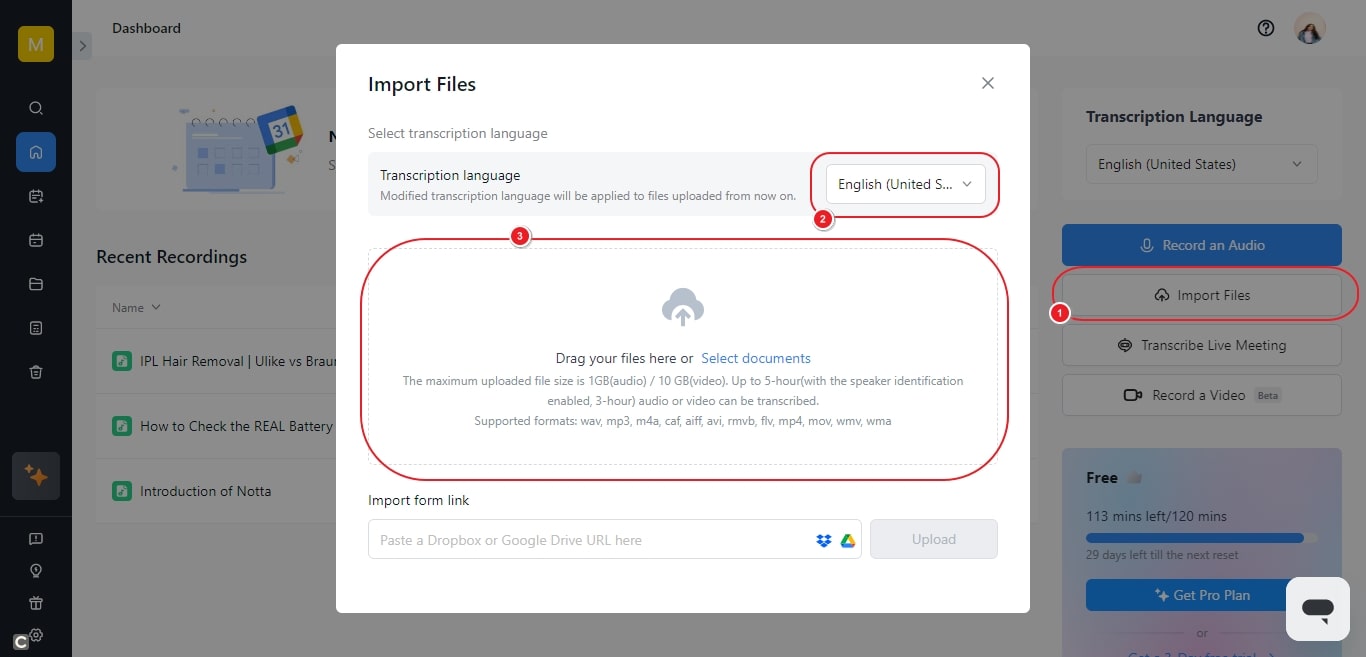
Notta will start transcribing what people say in a focus group. After it's done, you can label who said what, check the time when things were said, and make sure the transcript is correct.
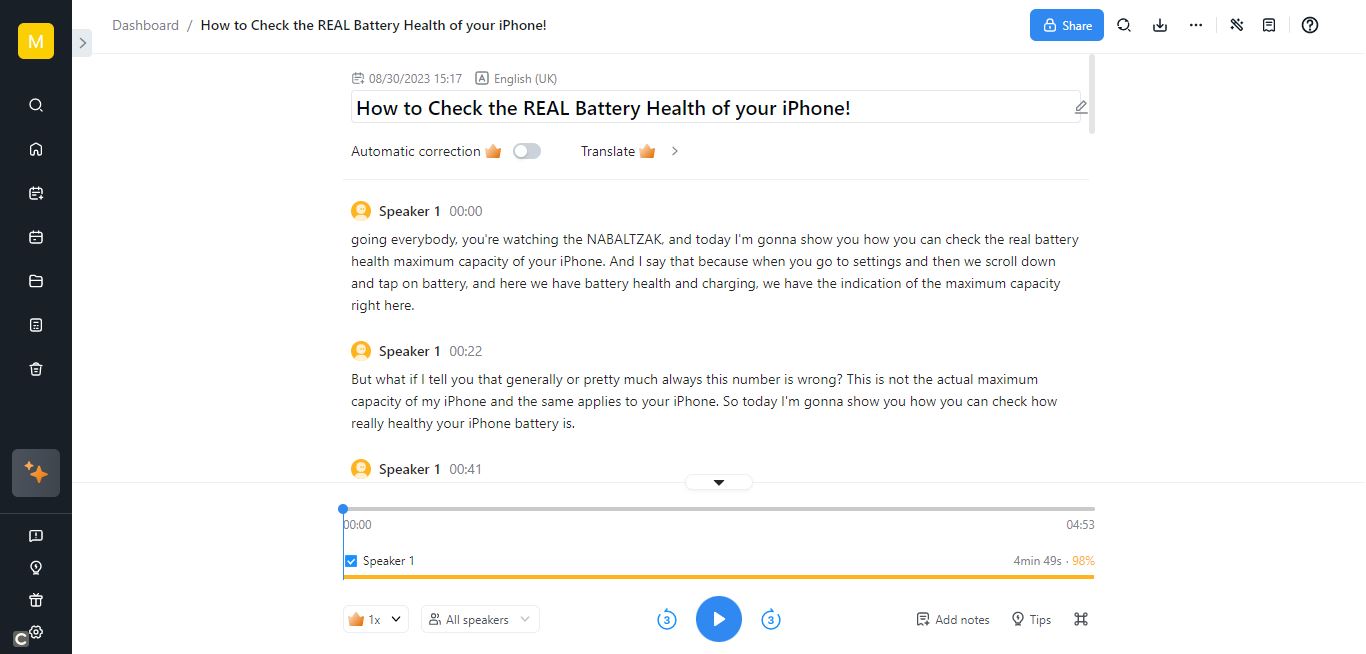
To save the text of your focus group discussion, just press the 'Export' button. You can pick the format you like, such as TXT, DOCX, SRT, XLSX, or PDF. Or, you can use the 'Share' button to create a special link to share with others.
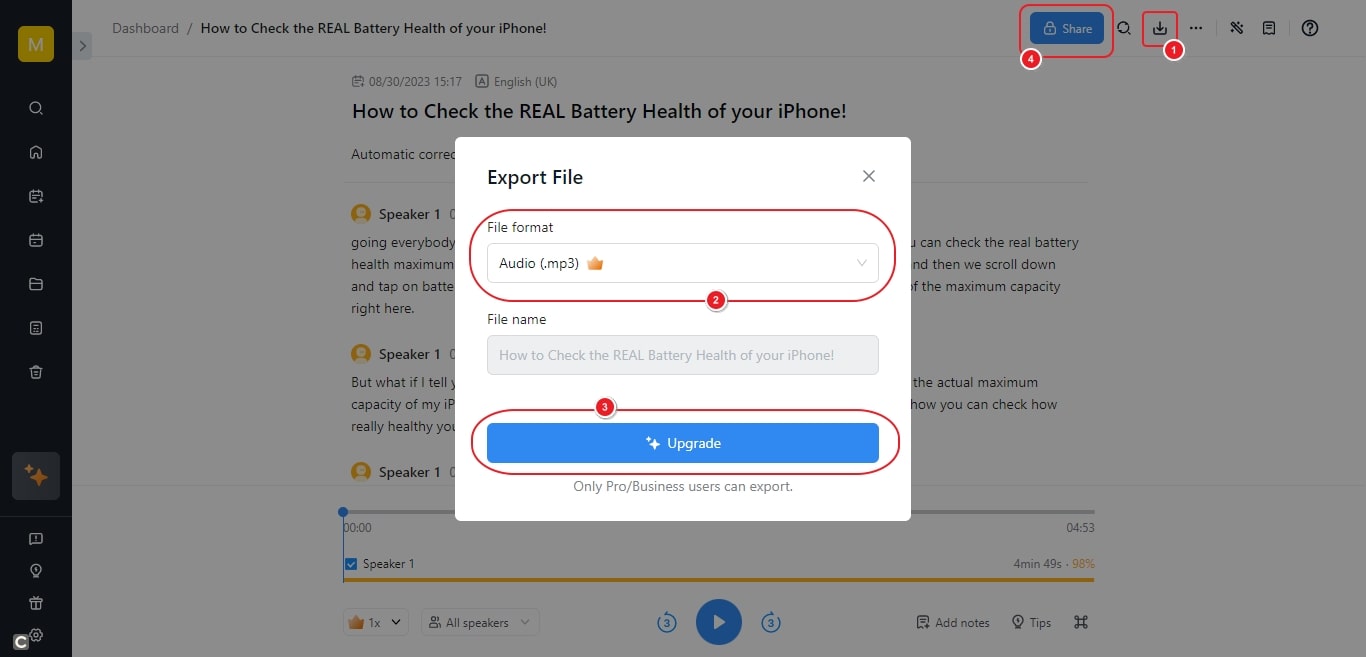
Notta can convert your spoken interviews and conversations into text with 98.86% accuracy in minutes. Focus on conversations, not manual note-taking.
Step 3: Identify speakers
To make the best use of your information from the group talk, it's important to know who is speaking. If you have a small group, you can use basic labels like "male," "female," or "moderator." But for bigger groups, you'll need to use people's names or letters to identify who's talking.
Step 4: Consider confidentiality
When making the transcript, it's a good idea to use numbers instead of names for the people talking. This way, it keeps things private, and everyone can freely share their thoughts. You can use labels like "Speaker A" instead of names.
Step 5: Don’t edit natural speech
When someone says a word wrong or uses a bad word, it's a good idea to fix it. But usually, it's best to not change anything. Sometimes, you might not be sure if what a person said is right. In those situations, you can put what they said in square brackets and note the time it was said for checking later.
Step 6: Add timestamps
Timestamping is like a time label that makes things easier. When experts turn speech into writing, they often add these time labels. They help you quickly find parts in the audio that you might want to check again. So, if something sounds confusing in the written notes from your group discussion, you can use these time labels to quickly find and listen to that part in the audio for a better understanding.
Step 7: Proofread the completed transcript
Even if your participants make mistakes when they talk, try your best to write down exactly what they say. Checking for errors is the last thing you do when making sure your focus group discussion is transcribed correctly. Usually, you should look through the transcription two times to make sure it's accurate and reliable.
How to transcribe an online focus group?
It is important to transcribe online focus groups before translating. Because it helps to capture the details, ensure accuracy, and make it easier to understand. Notta is one of the best focus group transcripts that turns your recordings into text. It works with Google Meet, Microsoft Teams, Zoom, and more, and it can transcribe in different languages.
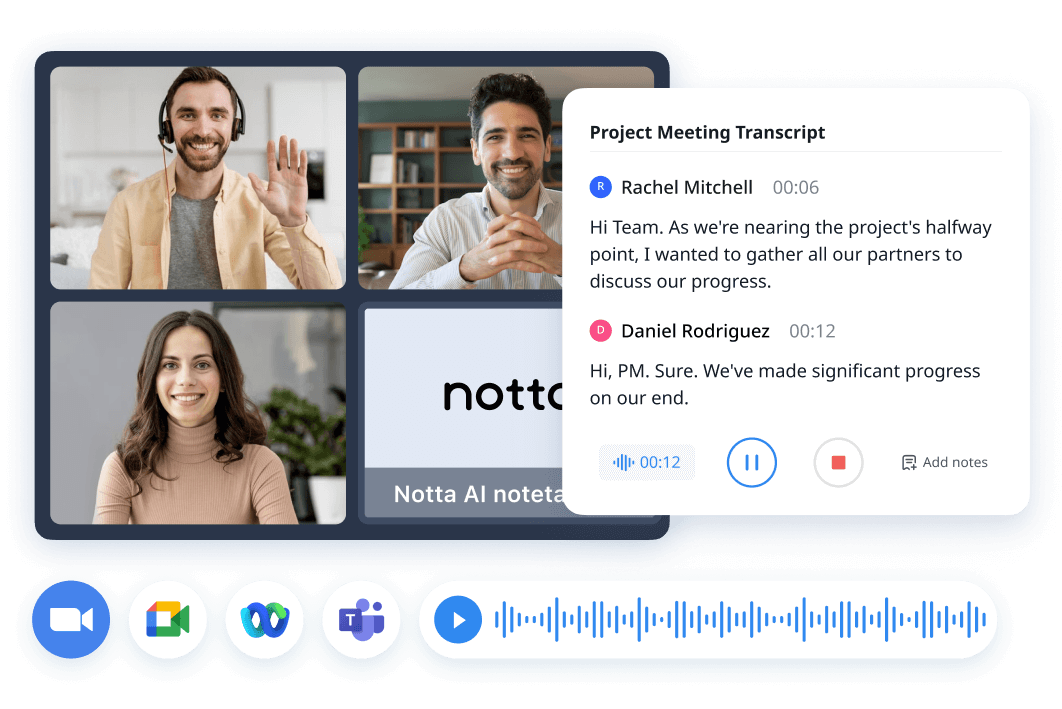
Here are the steps to transcribe the online meeting with Notta -
Step 1: Sign in to your Notta account and visit the main page. Press "Join Live Meeting" to enter a Zoom meeting online.
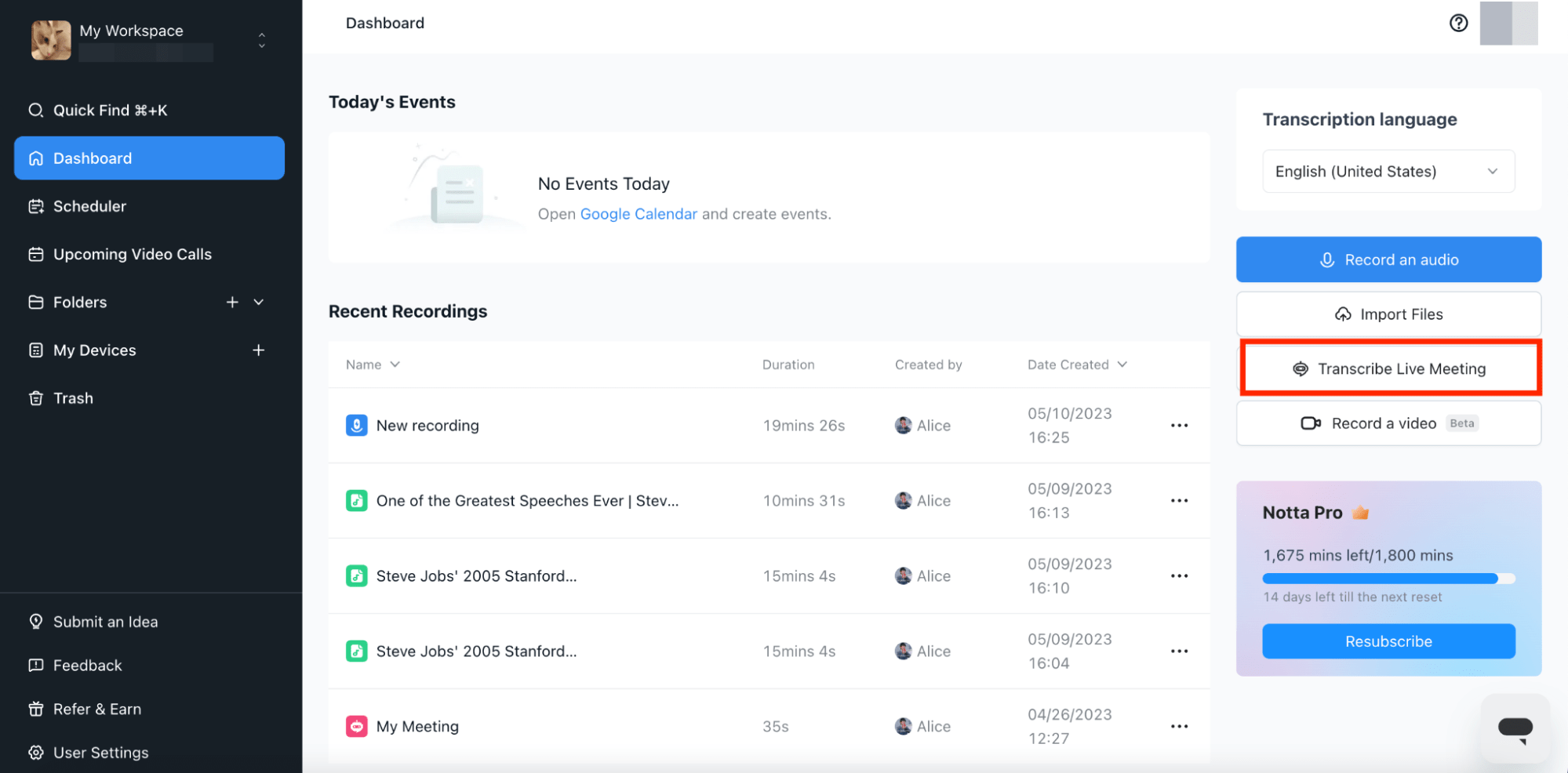
Step 2: Copy and paste the meeting invite link into Notta, then click "Transcribe Now." Notta will send a special bot to join the meeting, record it, and turn the talk into text.
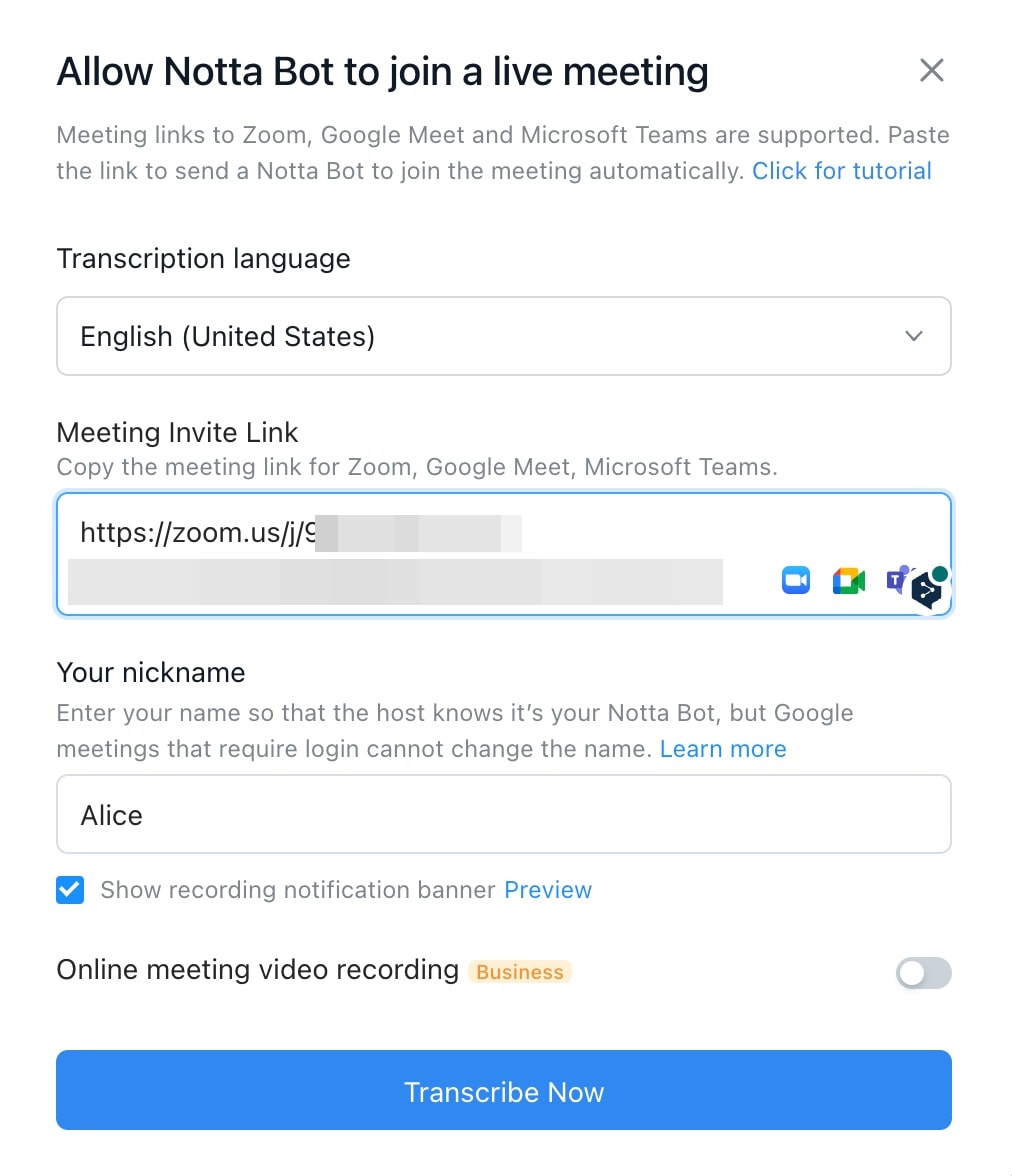
Step 3: Notta begins recording and transcribing when the meeting owner allows Notta Bot to join. You can find the recording and transcripts on Notta's dashboard. Just click on the record to open the transcript and make edits to the content.
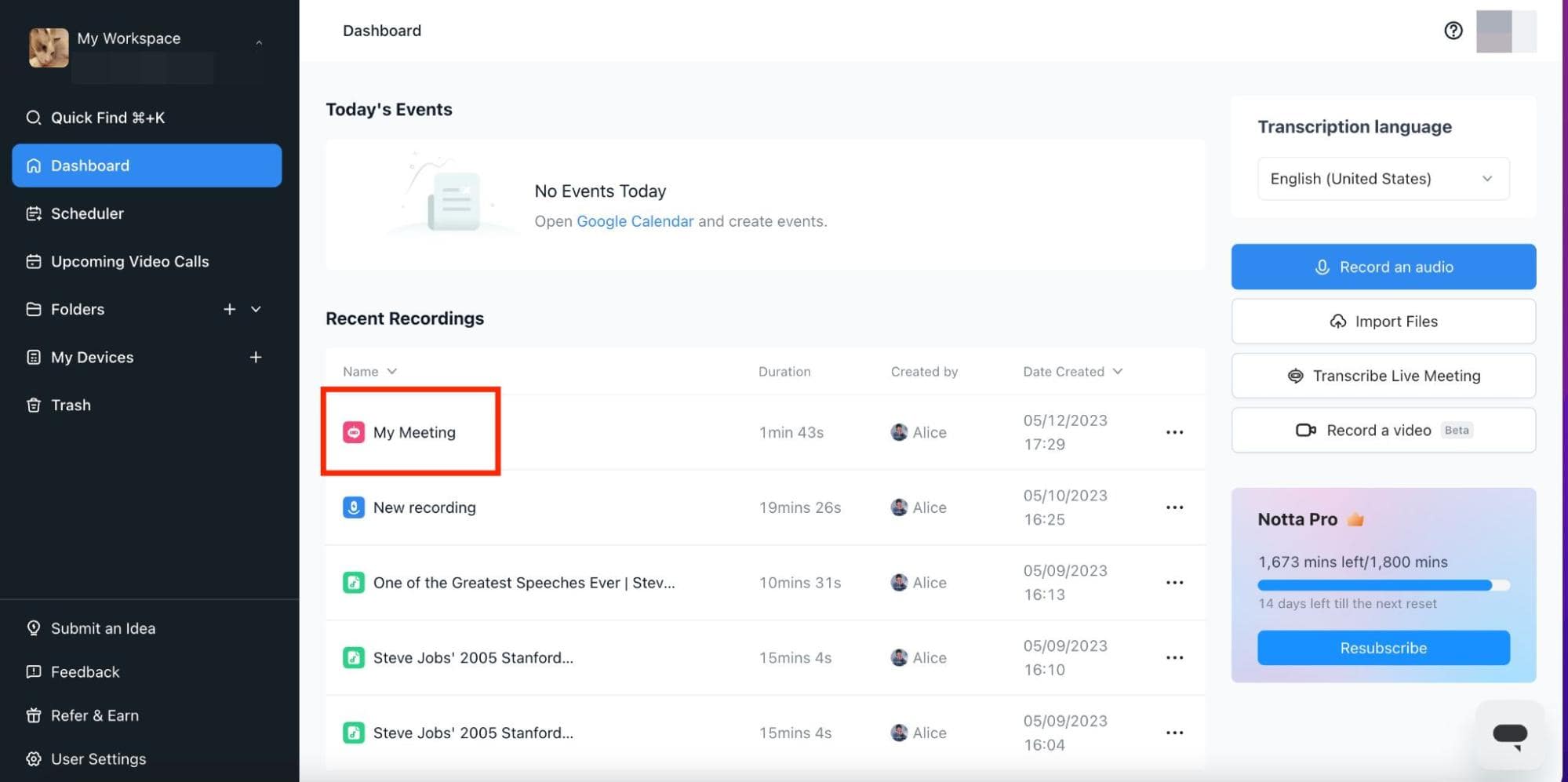
Step 4: You can save your meeting notes in different file types, such as TXT, DOCX, SRT, or PDF. If you prefer, you can also turn the recordings into audio files. Sharing is easy too—just click "Share" to send both the notes and recordings to your colleagues.
Notta offers the most integrated AI meeting notes, summaries, and action items so nothing gets missed.
How long does it take to transcribe a focus group?
Transcribing conversations depends on a few things, like how long it lasts, how good the sound is, and how skilled the person doing the transcription is. Usually, if the audio is good, it takes around 4-6 hours to transcribe one hour of a focus group. But if the sound isn't great or many people talk at once, it can take much longer—sometimes up to 8-10 hours for just one hour of talking. However, focus group transcription services save time for your researchers, and you get accurate transcripts fast. Notta can finish most transcripts in just a few minutes, so you'll have usable files right away.
How to speed up your transcribing process?
If you're not experienced in focus group transcription, it usually takes more than four minutes to type out each minute of audio. Sometimes, you'll need to pause, stop, and go back in the audio to catch things you might have missed. Here are some things that you can do to speed up your transcribing process -
Get headphones that cancel out noise. They make it easier to hear what's being said in the recording, especially when it's hard to understand.
Use a foot pedal. This is a device that lets you control the audio playback with your foot, so you don't have to use keyboard shortcuts, which can slow you down.
Consider getting better recording equipment. If you want to save time, it's a good idea to use high-quality recording devices. They give you clearer audio with less background noise, making it easier to listen and transcribe.
Get transcription software. Professional software designed for transcription can help you work more efficiently, as it reduces the time you spend switching between different computer windows.
Think about hiring a professional transcription team. Instead of struggling to transcribe on your own, you can hire experts to do it for you. This is especially valuable if you're investing a lot of money in focus group research. It ensures you get accurate and quick results, even if it comes at a cost, which can be upwards of $6,000 for a 90-minute session.
Should your focus group be in person or online?
Some companies used to have focus groups where people met in person, but now, many are choosing to do them online. This is because a lot of people have learned to use online meeting tools like Zoom. Both ways have good and not-so-good things, so it's important to think about what's best for your research.
In-person focus groups: When everyone is in the same room, they can connect better. It's easier to understand what they mean by their expressions and body language. This is also better for research involving kids who might not do well in online meetings.
Online focus groups: These are cheaper and simpler to set up. More people might want to join because they don't have to travel to a specific place. Plus, you can get people from different locations together without needing them to travel.
No matter which one you choose, it's a good idea to use transcription services to keep a good record of what's said in your focus group discussions.
Why are more businesses using focus groups?
Focus groups are a fast and cost-effective way to learn what consumers want and think. They're quicker and cheaper than big surveys. In focus groups, experts can ask participants more detailed questions. Instead of quick yes/no answers, companies are using focus groups for longer, more detailed discussions.
When done right, focus groups get people talking and engaged in the research topic. To be effective, it's important to capture everything said in the discussion. Transcribing focus group interviews helps with this. It makes it easy to review and search the conversations to find useful information.
Conclusion
Transcribing focus group talks is vital to understanding what customers think and learn from research. In this article, we have described how to transcribe a focus group discussion. Notta is a great way to do this, whether the discussions happen in person or online. It's easy to use and has cool features like recognizing who's talking, keeping things private, transcribing quickly, and even summarizing with AI.
Notta works well for businesses because it's easy to use, works with different meeting tools, and gives accurate transcripts quickly. In a time where being fast and accurate is important, Notta makes sure that what people say in focus groups is easy to find and use. If you want quick, accurate, and easy transcripts, go for Notta!